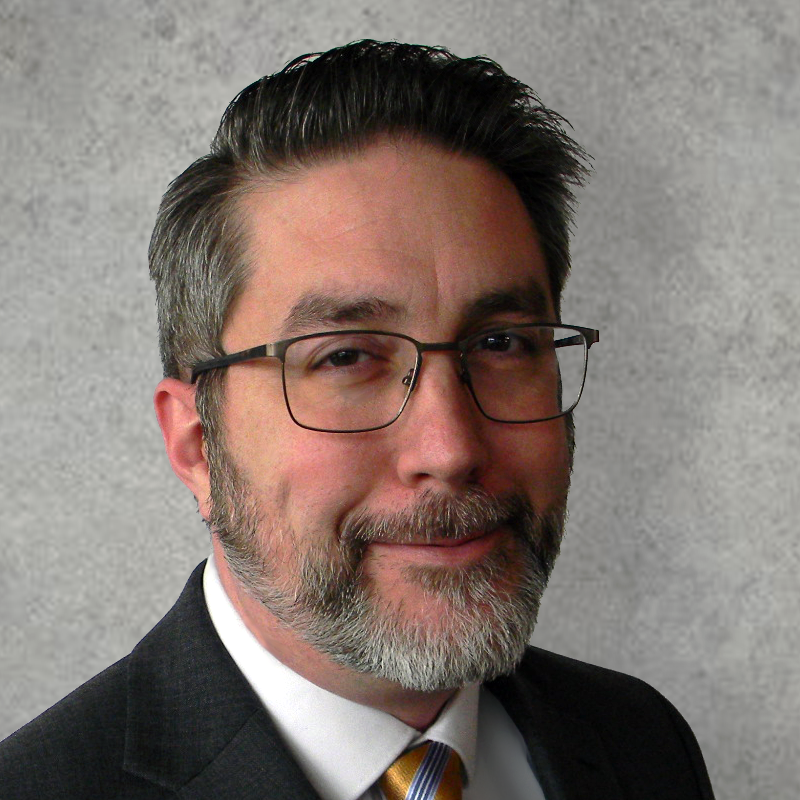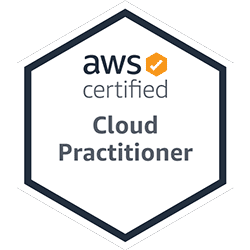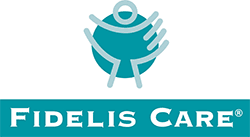Summary
● To their detriment, most organizations do not formally define the role of software architect.
● The agile methodology doesn't guarantee the creation of flexible software products.
● The consistent application of development practices like SOLID, AOP, and TDD leads to reliable products that are easy to maintain and extend.
● Software architecture is still an important concern despite embracing cloud-native architectures.
A Missing Role

A Software Architect is responsible for overseeing a system's overall structure and design, ensuring that it aligns with business goals and remains adaptable to evolving requirements. Unfortunately, in most organizations, this role is not formally defined.
Other technical leadership roles may exist, but they don't have the same focus. Enterprise Architects evaluate third-party technologies and mandate their use, while Solution Architects focus on course-grained, high-level, system-to-system integrations. Management is often too busy—or simply not technical enough—to provide much architectural guidance.
Instead, software architecture is, by necessity, left up to the Software Engineers. While this de facto approach sounds reasonable—the engineers have to work with the system, after all—there are problems with leaving the architecture undefined.
The first problem is that developers may become overly focused on delivering individual stories, overlooking the importance of viewing the system as a whole. This myopic approach can result in a heterogeneous architecture, where different parts of the application diverge due to variations in the developers' backgrounds. Left unchecked, some modules may become so cryptic that only the original developer can maintain the code.
Secondly, under constant schedule pressure, developers might prioritize quick solutions over thoughtful architectural considerations, leading to the accumulation of technical debt. Unfortunately, refactoring, essential for maintaining a healthy codebase, often takes a back seat to more immediate business needs, so any technical debt may reside in the backlog for a considerable time before being addressed.
Finally, the team may not have experience in, or even knowledge of, agile development practices. Without a designated Software Architect, teams inevitably fall back to a design-by-committee approach, where decisions are influenced by the loudest voice rather than a strategic architectural vision.
Having a dedicated Software Architect, whether formal or informal, is pivotal. This individual should be well-versed in agile software development practices and be able to guide the team towards a cohesive and adaptable architectural design.
What does Agile Software look like?

In the pursuit of innovation, many organizations adopt the agile methodology. Once implemented, their product teams engage in time-boxed sprints, conduct daily scrum meetings, and actively manage a backlog of work. Successful implementation results in the release of working software into production early and often, defining a Software Development Lifecycle (SDLC) more responsive to changing consumer demands than traditional Waterfall approaches.
While agile adoption nurtures a culture that embraces change, it doesn't automatically guarantee that the resulting product shares the same flexibility. Surprisingly, agile teams can inadvertently craft software that is just as rigid as those built under traditional project management approaches. A telling example is when adding a new feature requires many small changes across multiple classes—a situation aptly coined "Shotgun Surgery." It signals that the application is rigid, contradicting the essence of agility.
Truly agile software transcends the methodology itself. It is characterized by clarity, flexibility, and maintainability. Refactorings are infrequent, signifying a system that readily adapts to change.
Agile Software sounds excellent, but how do we get there?

There are no shortcuts. No language—old or new—magically ensures good software architecture. With a bit of foresight and discipline, though, any product can be agile-first.
These software development concepts are not new or original to me, but I've found that they aren't broadly applied. The beauty of these concepts lies in their accessibility—they cost nearly nothing to implement but have the potential to save a substantial amount of money, frustration, and embarrassment in the long run.
While the principles outlined below are well-documented elsewhere, they remain underutilized. I provide only a brief introduction here, but I encourage readers to explore these concepts on their own.
SOLID Principles

First collected and presented by Robert C. Martin in 2000, SOLID is an acronym for five software development principles that focus on the design of classes. While initially intended for Object-Oriented Programming (OOP) languages, these principles have proven their versatility, and can be more broadly applied.
Single Responsibility Principle
The Single Responsibility Principle (SRP) advocates that each class has only one job, and therefore, a sole reason to change.
While most engineers understand the importance of ensuring individual functions have a single responsibility, its application to classes is less intuitive, especially when OOP educational materials often illustrate how one can add complex methods to data classes.
SRP guides developers towards a refined architecture by urging the separation of the data model from functionality. As an illustration, instead of appending a .Save() method to a class named Foo, adhering to SRP guides us to create a dedicated FooPersister class equipped with a .Save(foo) method.
Open-Closed Principle
The Open-Closed Principle (OCP) posits that each software entity should be open for extension but closed for modification. At first glance, this principle might appear self-contradictory, but it promotes the use of inheritance through subclassing or interfaces.
OCP seeks to minimize the impact of new code on a system by favoring the extension of existing classes (or new implementations of interfaces) over altering proven, working code. However, it's essential to avoid taking this to an extreme; doing so can lead to the Onion anti-pattern, perpetually adding layers of code without modernizing the older portions. Striking the right balance is essential to maintaining an extensible and comprehensible codebase.
Liskov Substitution Principle
The Liskov Substitution Principle (LSP) asserts that subtypes must be substitutable for their base types.
Since most programming languages support polymorphism, allowing a subclass to be used wherever a base class is expected, the initial impression might be that LSP is redundant. However, LSP delves into the runtime behavior of the class, emphasizing that the subclass must be able to substitute for the base class without unintentionally altering the behavior of the program. (LSP obviously does not apply to classes that inherit from abstract base classes.)
Currently, LSP lacks compiler enforcement and relies on code reviews for adherence.
Interface Segregation Principle
The Interface Segregation Principle (ISP) promotes the creation of atomic, tightly-focused interfaces. A key advantage is that dependent classes can selectively request only absolutely necessary methods.
By encouraging the development of compact and purpose-driven interfaces, ISP aligns with the broader principles of modularity and simplicity in agile software design.
One of the significant benefits of ISP is its role in preventing SRP violations. Where SRP emphasizes that a class should have only one reason to change, ISP ensures that an interface, as a contract, remains cohesive and does not bloat with unrelated methods.
Dependency Inversion Principle
The Dependency Inversion Principle (DIP), often referred to as Inversion of Control (IoC), stands out as one of the most pivotal principles among the SOLID set. DIP fundamentally transforms how software components interact by shifting the traditional control flow.
DIP advocates that classes should declare their dependencies and receive them through external means, rather than being responsible for the instantiation of foreign classes. This leads to more flexible, modular, and easily maintainable systems.
Consider a scenario involving a FooManager class dependent on a class implementing the IFooPersister interface. Instead of internally instantiating the dependency, DIP mandates passing the dependency from external sources. During runtime, the FooManager could receive a FooDatabasePersister, a FooFileSystemPersister, or a MockFooPersister. This level of flexibility empowers developers to adapt the system to changing requirements without needing to modify the core logic of the components.
The recommended approach for handling dependencies is through constructor injection, passing dependencies in at the time of instantiation. This method enhances clarity, as dependencies are explicitly declared, making it easier to understand and enforce. Property injection is an alternative, where dependencies are passed through properties, but constructor injection is generally favored for its transparency and effectiveness.
Five Principles, One Unified Approach
While the SOLID principles—Single Responsibility, Open-Closed, Liskov Substitution, Interface Segregation, and Dependency Inversion—are often discussed individually, their true strength lies in their collective synergy. Each principle is not an isolated guideline but a crucial piece in a unified approach to robust and maintainable software design. For instance, Interface Segregation helps enable Dependency Inversion, which is best implemented when classes and interfaces have a Single Responsibility.
Essentially, the SOLID principles form a holistic framework where each principle complements and reinforces the others. They are interconnected threads in the fabric of software design, weaving a tapestry of code that is not only modular and flexible but also resilient to the evolving needs of a dynamic development environment.
Aspect-Oriented Programming

When common concerns, such as logging, monitoring, caching, and security need to be addressed, these concerns can wind up repeated across multiple methods or modules. Aspect-Oriented Programming, or AOP, is a powerful approach to elegantly handle these cross-cutting concerns.
AOP operates by segregating cross-cutting code into entities known as "aspects." These aspects encapsulate functionality that needs to be applied uniformly across various parts of the codebase. This approach brings modularity and abstraction, preventing the scattering of concern-specific code throughout the application.
The implementation of AOP may vary across programming languages, but a common pattern involves proxies that are generated at compile time. These proxies act as wrappers around the methods of target classes, intercepting calls and executing the aspect logic before and after the original implementation. This interception mechanism ensures that the cross-cutting concerns are seamlessly woven into the application without cluttering the core business logic.
Most popular Inversion of Control (IoC) containers, such as Unity and Spring, come equipped with built-in AOP functionality. However, the full potential of AOP is often underutilized, possibly due to a lack of awareness.
By embracing AOP, developers can significantly enhance code maintainability and reduce redundancy. It provides a centralized and modularized approach to handling concerns that span multiple parts of the codebase, promoting cleaner, more readable, and more maintainable software architectures.
Test-Driven Development

While good development teams write unit tests to test their code, the best development teams practice Test-Driven Development (TDD).
TDD takes an idiosyncratic approach, transforming requirements into tests before the development commences. These tests are expected to fail initially; the development cycle involves refining the code until the tests pass. This pattern results in a growing suite of tests that act as a safety net, ensuring the application functions as intended despite any ongoing modifications.
That key distinction of TDD—creating tests before undertaking development—ensures that the tests are intrinsic to the requirements, and not contingent on the specific implementation details. In contrast, writing tests post-implementation—say against the individual methods of FooManager—can lead to a more rigid system. Changes to the implementation may necessitate extensive rewrites of the tests, making the system resistant to refinement or refactoring. This resistance goes against our goal of agile software.
Instead, TDD promotes the creation of tests at the outermost layer of the program, free from dependencies on internal implementation details. For instance, when developing a microservice, the tests should simulate actual requests, routing them through the request handler and asserting that the responses align with the expectations. Placing tests at the system boundaries facilitates unencumbered refactoring while affirming that the architectural changes haven't introduced flaws.
External dependencies should also be circumvented. Instead of testing against live data sources or APIs, mocks should be employed to create static conditions to test against. By decoupling tests from downstream system uptime and insulating them from data volatility, the stability of the test suite is preserved.
As an additional layer of quality assurance, the Continuous Integration/Continuous Deployment (CI/CD) pipeline acts as a gatekeeper. Any test failures should trigger a halt in the build process, preventing the deployment of the product until detected flaws are addressed. This stringent adherence to testing practices in TDD not only fosters a robust codebase but also instills confidence in the development and deployment process.
Are Agile Development Practices Still Relevant?

The world has changed dramatically since these practices were first introduced. Today, dealing with cloud-native applications and scalable microservices, leads some to question whether agile development approaches are still relevant. I argue that these practices remain indispensable.
Deployment strategies, such as Horizontal Pod Autoscaling (HPA) or Vertical Scaling, cannot replace solid software architecture. While these strategies address immediate scalability concerns—effectively, throwing more hardware at the problem—they are not substitutes for the foundational principles described above.
With their emphasis on creating efficient, lean, and flexible software, SOLID principles provide a timeless framework that aligns seamlessly with cloud-native architectures.
In modern systems that deal with millions of requests daily, the significance of monitoring and security cannot be overstated. Aspect-Oriented Programming emerges as a powerful tool to systematically address cross-cutting concerns, ensuring critical aspects like authorization are embedded throughout the application.
In environments characterized by continuous delivery, Test-Driven Development remains a linchpin for ensuring product quality. TDD enables development teams to react swiftly to evolving requirements; the confidence instilled by a robust suite of tests ensures that each deployment is a controlled and low-risk operation.
Navigating the Future

There is no substitute for good software architecture; the cloud is not a panacea. Crashlooping, memory leaks, and processor spikes all indicate that an application needs architectural revisions.
While the technological landscape has undergone significant transformations since these practices were first introduced, they continue to provide a resilient foundation that thrives in the face of contemporary challenges.






















 Recent
Recent





























